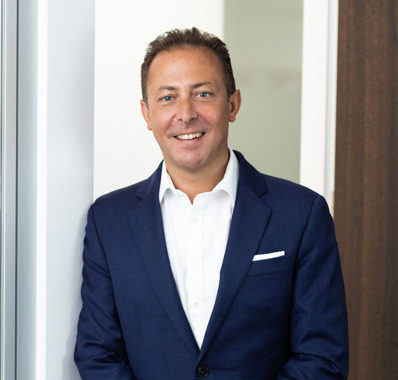The Rise of Continuation Funds
28 July 2025

Paul St Romaine, Funds Director, discusses the significant role continuation funds have adopted within the Private Equity market, the typical structuring of continuation funds and how Jersey is a highly suitable and regulatory efficient jurisdiction for the set up of bespoke fund structures.
Continuation funds have grown significantly over the past decade, evolving to become a mainstream feature of the Private Equity (PE) secondary market. Against a backdrop of the current complex geopolitical climate and market unpredictability, there is a drive for fund structures that can offer flexibility and growth. Within such an environment, continuation funds have experienced a newfound wave of popularity due to their adaptability within the secondary market. They have facilitated investor appetite to diversify their fund portfolio and optimise liquidity and returns on investments by creating an attractive alternative exit route that offers reinvestment opportunities, whilst also mitigating market risk.
There has been an impressive acceleration of continuation funds coming to the market. According to Preqin, a record 77 continuation funds closed in 2024 and the fundraising momentum shows no signs of slowing in 2025, with $25 billion raised across 54 funds in the first six months. Newcomers to the market are also on the rise with 64 managers across the globe closing their first continuation funds in 2024, up 25% from the previous year.
Key Features of Continuation Funds
- General Partners (GPs) are able to hold onto high-quality assets from an existing fund that has already reached or is near approaching the end of its term, allowing them to maximise value.
- Limited Partners (LPs) are presented with the option to cash out, exit, and benefit from liquidity or, alternatively, they can reinvest in the new continuation fund vehicle.
The life cycle of a continuation fund is typically shorter than a traditional PE fund, with a three-to-five-year investment period.
Typical Structuring Of Continuation Funds
- Single asset continuation funds focus on a single “Trophy” portfolio company considered to have significant additional upside potential. The strategy can be tailored to the Trophy asset which, by its nature, is easier to price and structure. The GP can still manage the asset after the fund’s original term, creating the possibility for ongoing growth of the fund.
LPs are given two options: sell their interest in the fund and receive liquidity or reinvest into the new continuation fund.
- Multi-asset continuation funds, as the name suggests, involves the transfer of multiple assets from the original fund vehicle to the continuation fund. This type of structuring is used when GPs seek to maintain the term of multiple portfolios by transferring them into a continuation fund. This option is used as it mitigates market risks by providing portfolio diversification and risk balancing benefits for new incoming investors.
As with single-asset continuation funds, LPs are given the same options with multi-asset funds, to either cash out or reinvest in the continuation fund.
Both types attract new investors to mature assets and help the PE market adapt to ever changing market conditions, offering flexibility for both GPs and LPs.
Setting up a Continuation Fund
1. The GP identifies one or more assets from an existing fund that they believe have further value creation potential.
2. A new vehicle, the continuation fund, is set up to purchase these assets from the existing fund.
3. An independent valuation is typically conducted to determine a fair price for the assets.
4. The continuation fund raises capital from new investors, typically dedicated secondary funds, to purchase the assets and potentially provide follow-on capital to support the growth of the portfolio companies.
5. The assets are transferred to the new continuation fund, with proceeds distributed to selling LPs.
6. The GP continues to manage the assets in the new vehicle, typically with a reset of the fund’s economics to better align the interests of the GP and LPs. For instance, carried interest is usually calculated from the current net asset value (NAV) at the time the continuation fund is established, not from the initial investment cost, thereby incentivising the GP to generate returns above the new NAV.
Continuation Funds – Serviced By Fairway
Fairway is well-placed to service both types of continuation fund, enabling GPs to operate efficiently by offering a comprehensive range of solutions under one roof. Our team is experienced in offering innovative fund structuring solutions for clients looking to diversify their fund portfolio or set up and invest in new fund structures such as continuation funds. As a Jersey headquartered business, our clients can be assured of the reliability, political and economic stability and comprehensive regulatory and legal framework. Within the midst of an unpredictable global economy Jersey, as a stable and independent jurisdiction, offers unique and versatile fund structuring opportunities for entry into new global PE markets.
Continuation Funds In Jersey – The Jurisdiction Of Choice
- Jersey is a highly respected, politically stable and internationally recognised financial centre with a strong and robust legal and regulatory framework.
- The regulatory efficiency and flexibility allow for a fast approval and transfer process for investment funds looking to domicile in Jersey.
- Jersey is a highly regarded jurisdiction of choice for GPs establishing continuation funds.
- Supported by a strong and diverse network of highly experienced professionals, it is suitable for setting up complex and bespoke continuation fund structures and transactions.
Jersey has a range of flexible fund structures such as the popular Jersey Private Fund (JPF). The JPF is a light-touch regulatory product which is quick to market.

"We have seen a significant growth of continuation funds within the Private Equity secondary market. Our team is experienced in offering innovative fund structuring solutions for clients looking to diversify their fund portfolio or set up and invest in new fund structures such as continuation funds."
Paul St. Romaine, Director, Funds
Please get in touch with the Fairway team to learn more about our fund administration offerings and bespoke fund structuring options
Funds Services | Fairway BACK TO NEWS
BACK TO NEWS




